
The Collection
The MENAEA Collection comprises more than 400 artworks (and counting) across a period of more than two millennia and is spread between London, Paris, Vienna and Kuala Lumpur. Our focus remains on the artworks of India, Pakistan, China, Iran, Iraq, Afghanistan, Malaysia, Cambodia, Indonesia, Nepal and Tibet. We are constantly updating our database and catalogue to display more of our objects.

A large Khmer sandstone torso of Uma in Baphuon artistry. Cambodia, 11th century C.E.
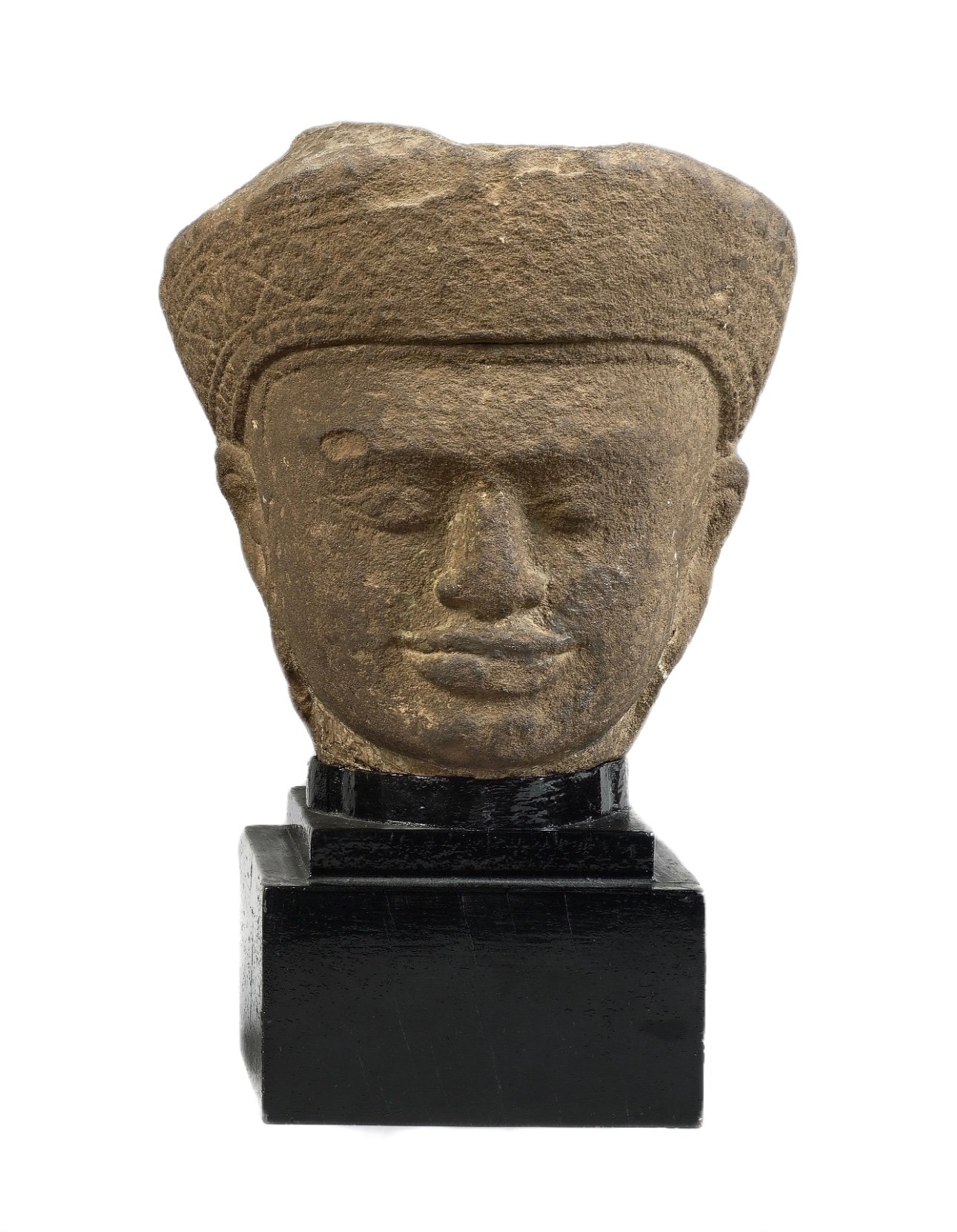
A head of a male deity in beige sandstone. His braided hair in a bun is encircled by a diadem tied at the back. Cambodia, 11-12th Century C.E.

A very large and fine yellow stone sandstone sculpture of a crowned four-armed Vishnu from the Chandela Dynasty. India, 12th-13th century C.E.
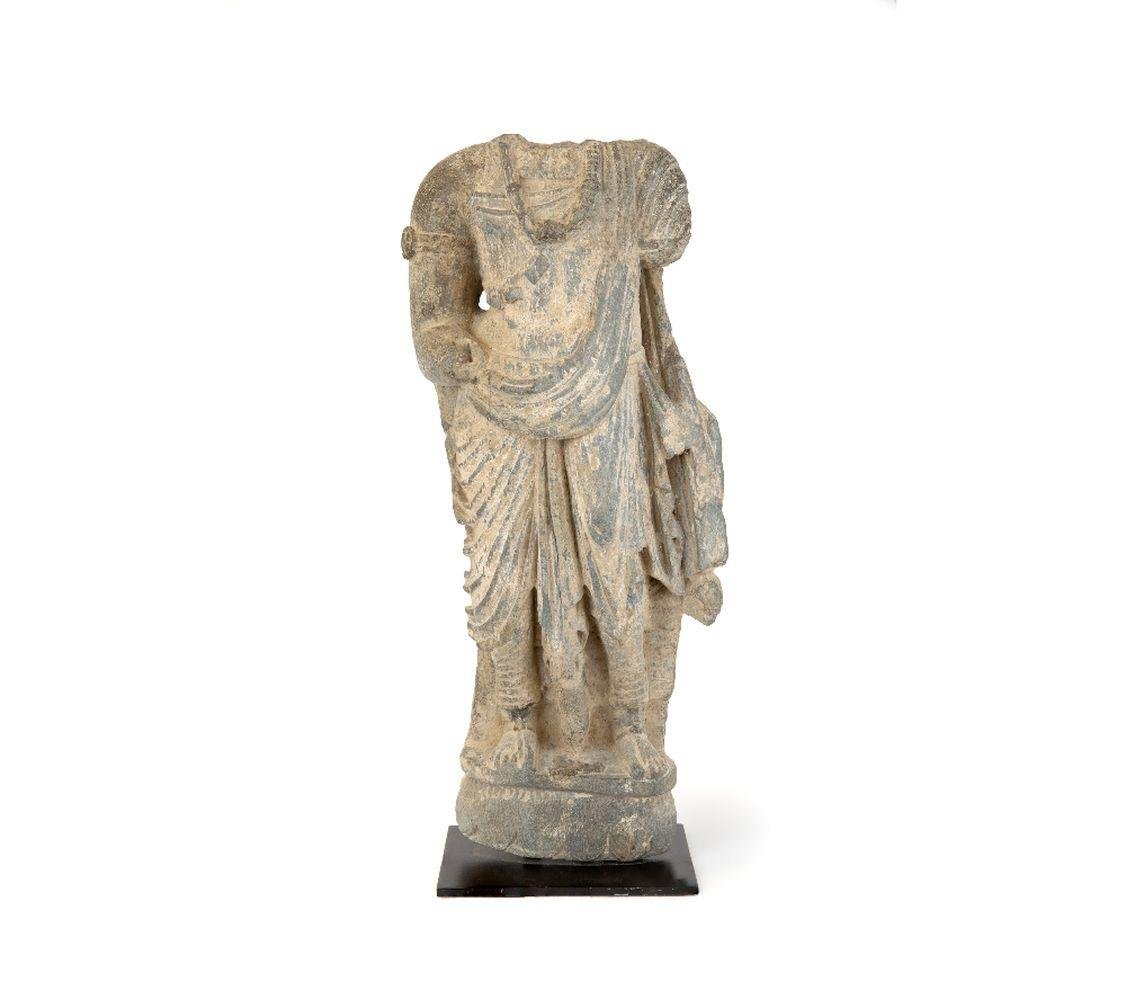
A large fragmentary Gandharan schist figure of a bodhisattva, possibly Maitreya. Afghanistan, 100-200 C.E.

A fine sandstone panel depicting Agni and two goddesses. India, 10th-11th century C.E.

A life-size sandstone figure of a goddess. She is luxuriously decorated with beaded jewellery throughout her body and regally crowned. Madhya Pradesh, India, 10th-11th century C.E.

A fine large sandstone torso of a Yakshi, narrow-waisted with a belly button and adorned with jewellery and dhoti. Mathura, India, 100-200 C.E.
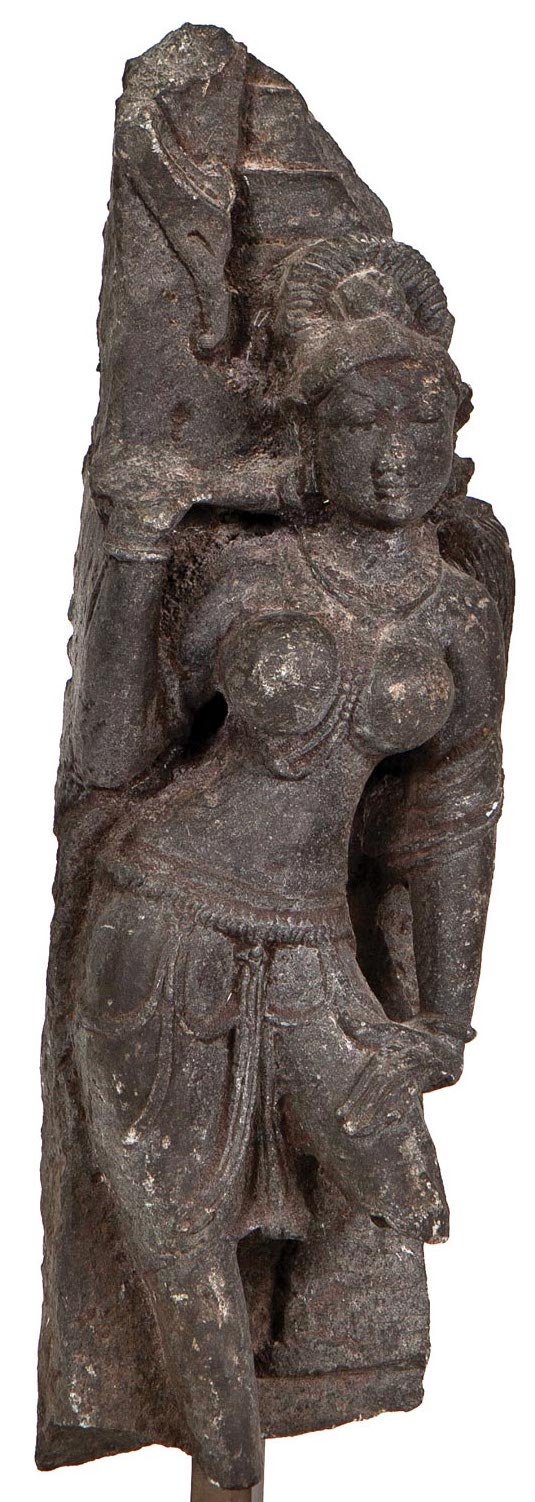
A stunning large black stone statue of a Yakshi, or female nature spirit who embodies fertility and prosperity. India, 11-12th century C.E.

A large Gandharan grey-schist carved image of Avalokiteshvara holding a lotus flower. The figure is seated in dhyanasana atop an intricately decorated plinth and adorned with jewellery. Afghanistan, 200-400 C.E.

A Gandharan schist frieze depicting a couple. Afghanistan, 200-300 C.E.
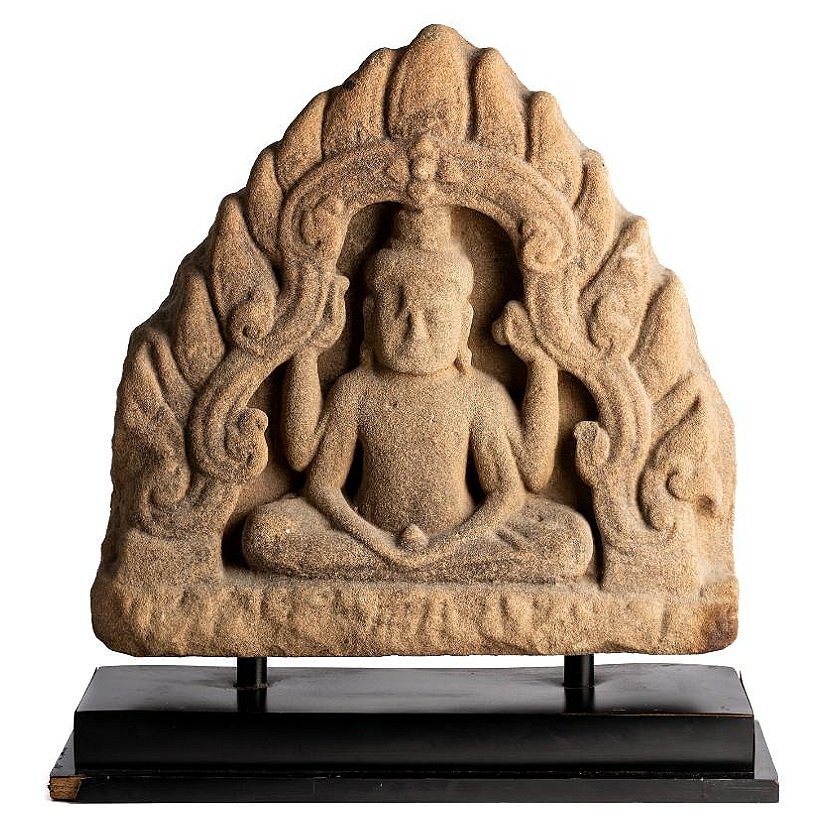
A large grey sandstone relief panel depicting a four-armed deity, probably Avalokiteshvara seated in a sattvasana within a scrolling flaming arch. Cambodia, 12th century C.E.
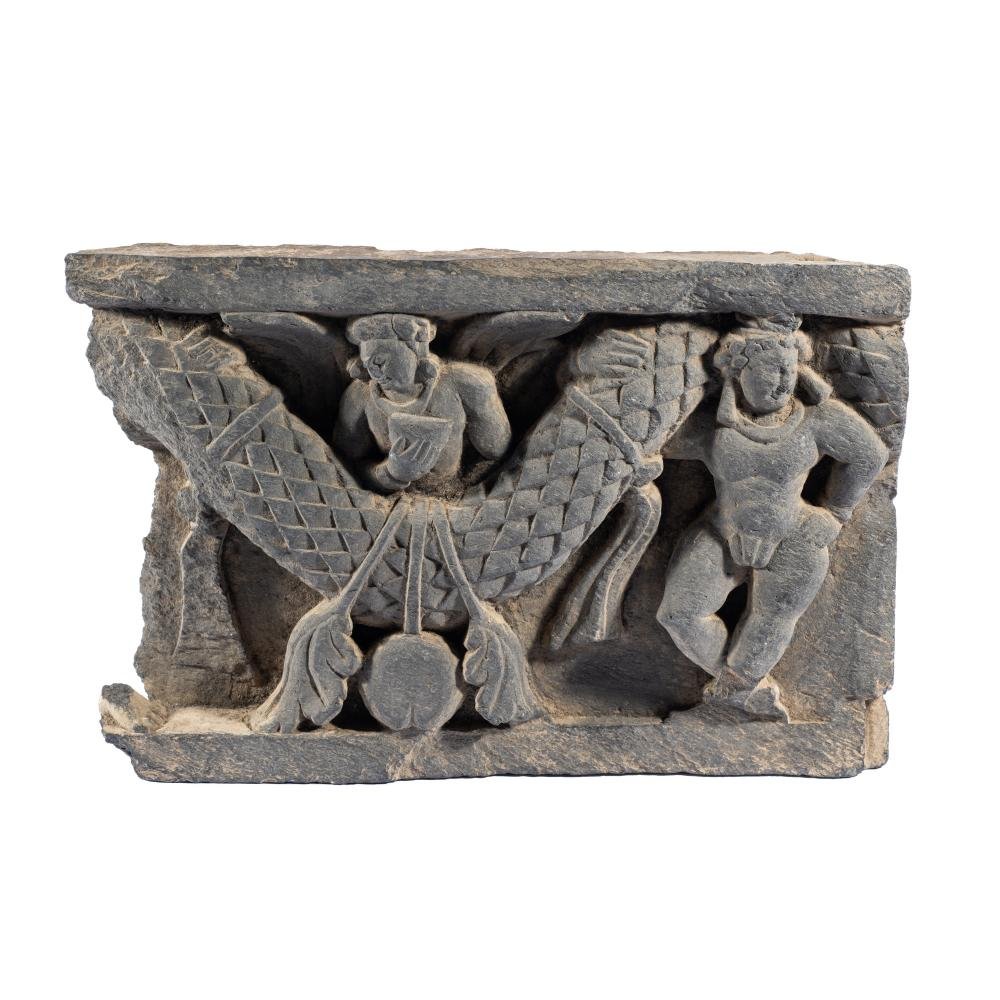
A Gandharan grey schist relief panel depicting two putti supporting a leafy garland weighed down by fruit. North-Western Pakistan, 300-400 C.E.

An exceptionally rare and large standing image of divine figure Mahakala in sandstone during the rule of the Mataram Kingdom, Java. Indonesia, 8th-9th century C.E.
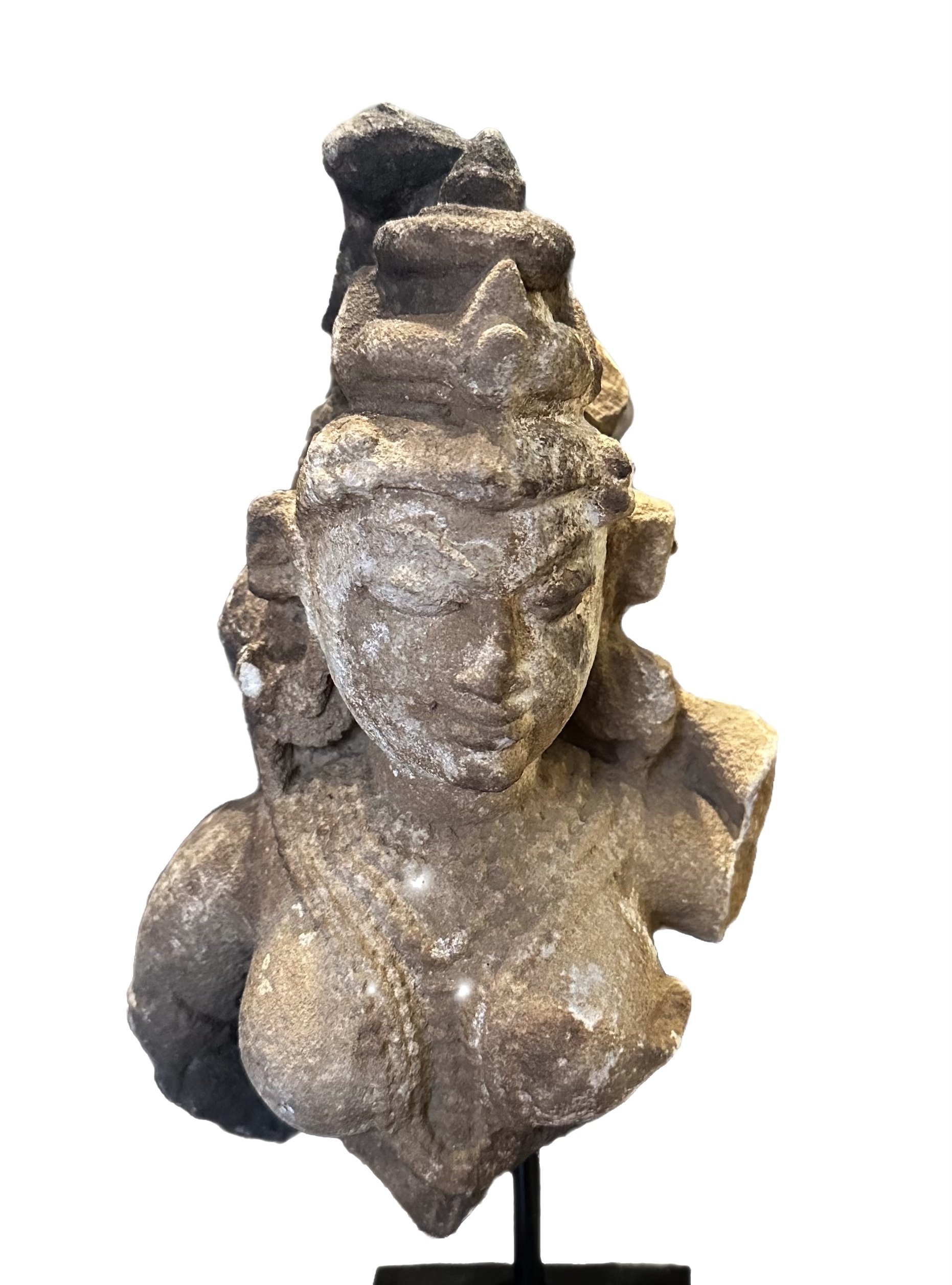
A fine fragmented sandstone figure of a goddess richly draped in jewellery. Rajasthan, India, 10th-11th century C.E.

A rare terracotta tile depicting a tiger attacking a man. Central India, 1600-1700 C.E.

A rare terracotta tile depicting a warrior charging with a sword and shield. Central India, 1600-1700 C.E.

A rare terracotta tile depicting a warrior holding a spear and a jug. Central India, 1600-1700 C.E.

A sandstone temple fragment depicting the image of a deity and their attendants. Central India, 11th century C.E.

A stunning large carved pink sandstone sculpture depicting dancing Apsara on both sides. They are adorned with intricate jewellery on the ears and body. Central India, 11th-12th century C.E.

A large Sukothai sandstone torso of Buddha with his right hand in Abhaya-mudra. Thailand, 13th century C.E.

A Gupta pink sandstone torso of a goddess. Northern India, 5th-6th century C.E.

A Gandharan gable section showing a woman operating a ploughing equipment, detailing to her face, hair, jewellery and garments. Pakistan, 200-400 C.E.
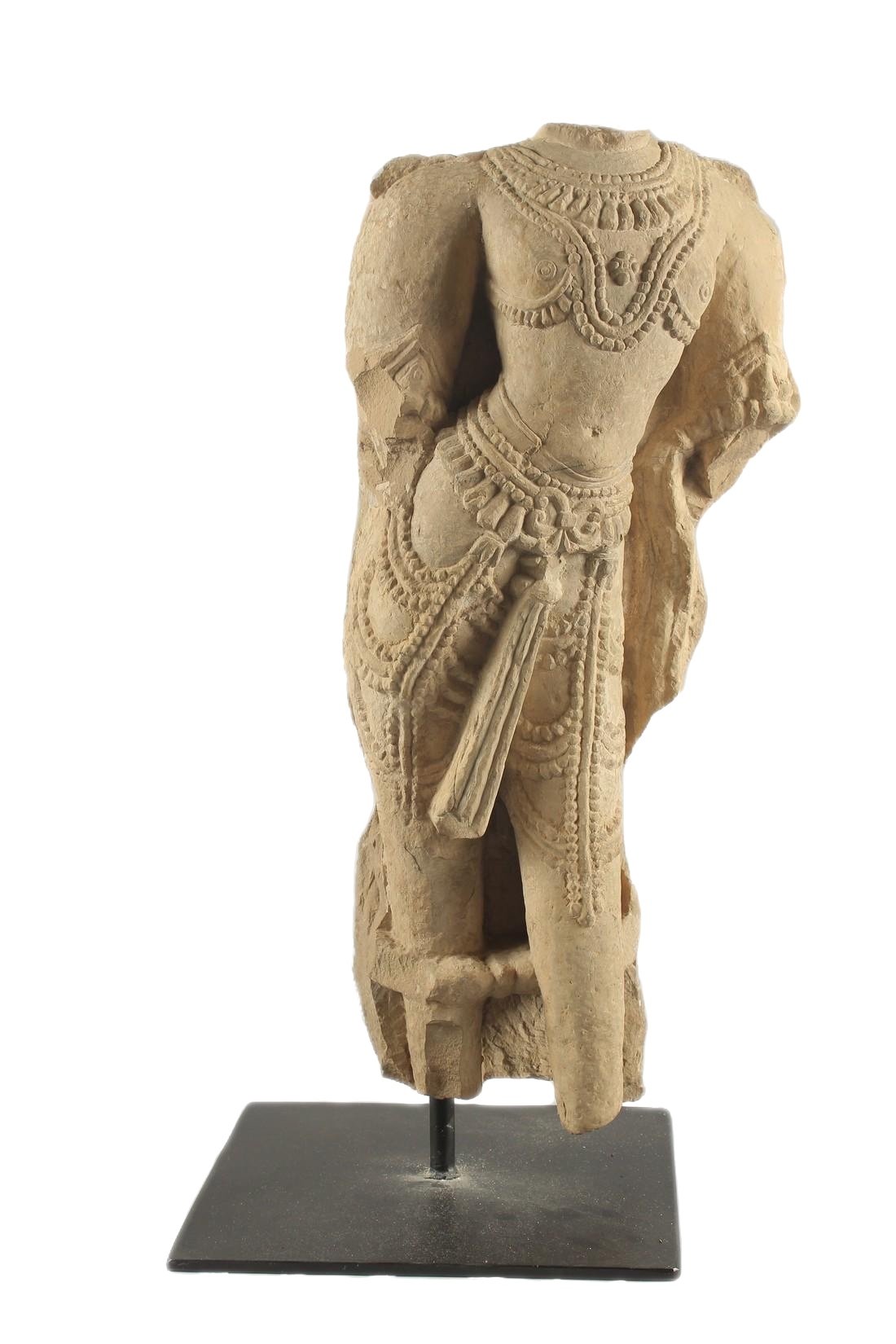
A fine large carved yellow stone torso of a female deity, the torso well decorated with beads and jewellery. Rajasthan, India, 11th century C.E.

A large sandstone figure of Vishnu. Powerfully carved with a muscular body in tribhanga with his right arm raised above his head, adorned in beaded jewelry around the waist and a necklace. India, 10th century C.E.

A rare bronze figure of Avalokiteshvara discovered in Sadaksari, Java in the 1970s. Indonesia, 9th-10th century C.E.

A Majapahit terracotta fragment of a face. Indonesia, 13th-14th century C.E.
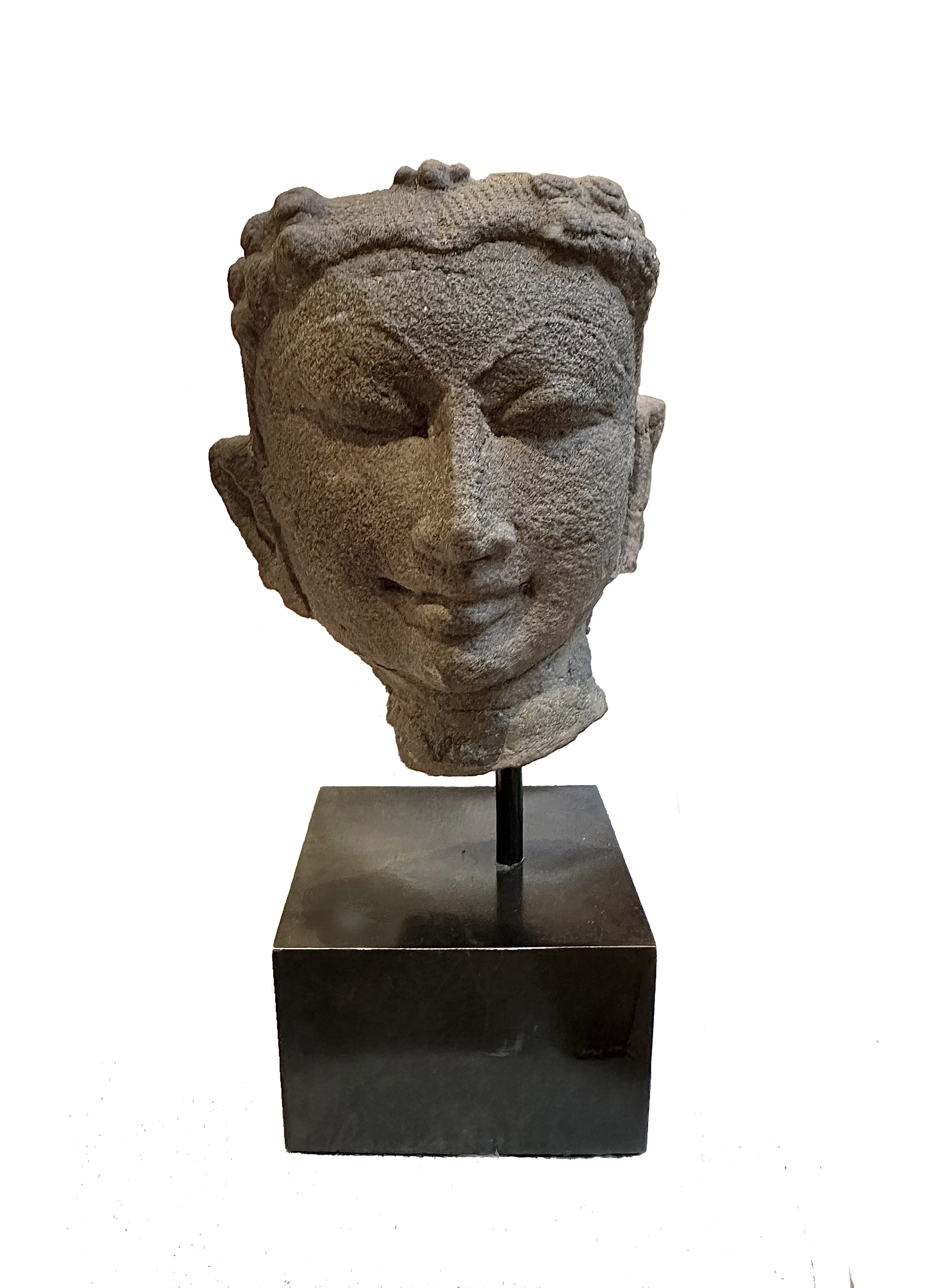
An Indian sandstone head of a male deity. 12-13th century C.E.

A red sandstone bust of Shiva, possibly from Rajasthan or Madhya Pradesh, India. 11-12th century C.E.

A Sino-Tibetan bronze figure of a Bodhisattva with long pendulous earlobes. set with large earrings and bare torso decorated with bejewelled ornaments. Qing Dynasty, 18th century C.E.

A fine Sino-Tibetan gilt bronze figure of Vajrasattva with a benevolent expression holding a vajra and bell whilst seated on a lotus base. Qing Dynasty, 18th century C.E.
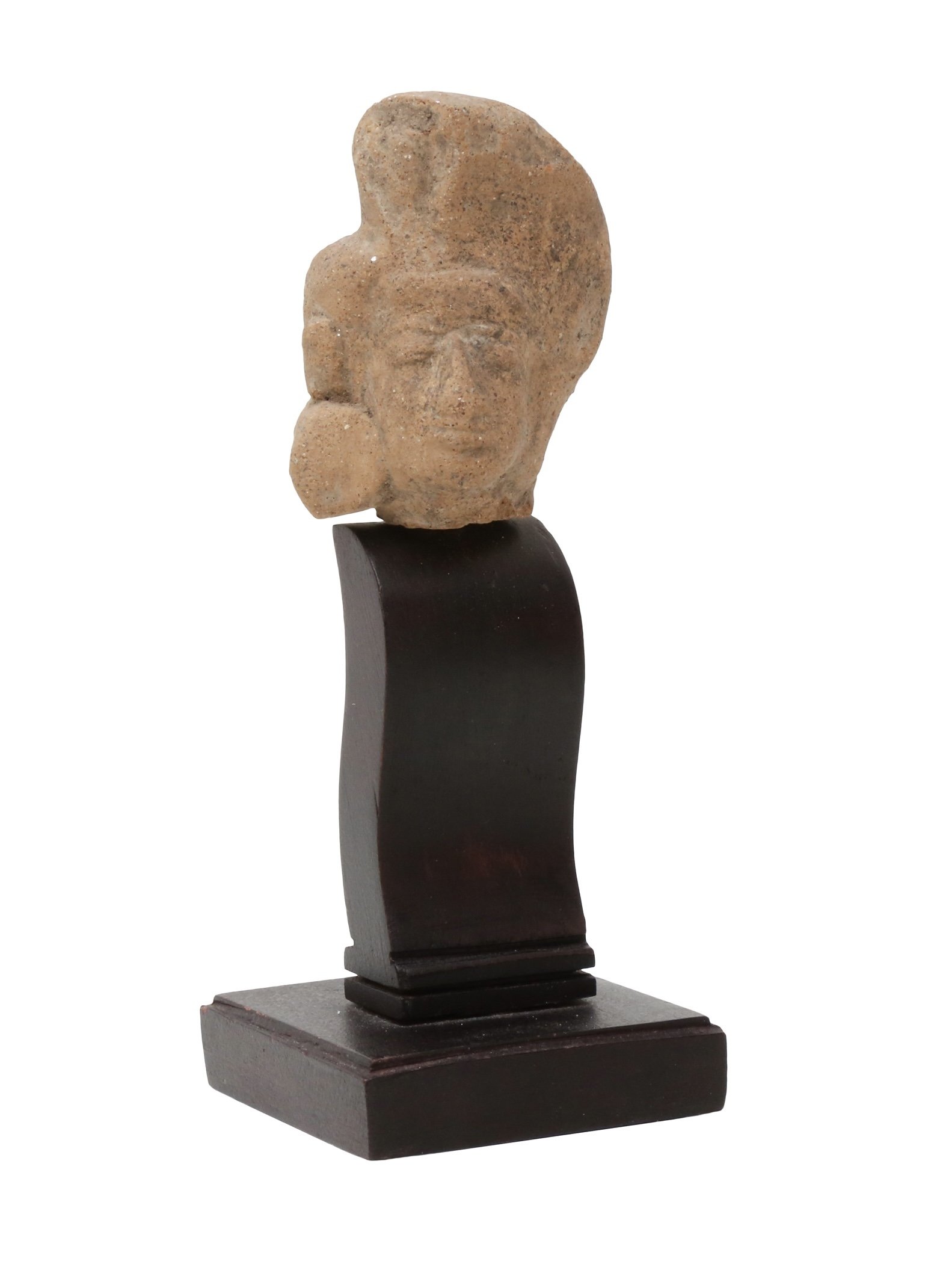
A Javanese Majapahit terracotta head with closed eyes and broad nose above pouting lips and below a voluminous coiffure. Indonesia, 14-15th century C.E.

A bronze Majapahit hanging lamp, with quatrefoil reservoir and arched suspension loop framing a seated figure. Indonesia, 14th century C.E.

A Baphuon carved stone head of Vishnu with a serene expression and his hair combed up in tresses into a chignon secured with a beaded string. Cambodia, 11th century C.E.

A Gandharan grey schist bust of Maitreya. North-Western Pakistan, 300-400 C.E.

A Majapahit figure of Shiva standing with a Javanese conical crown. Indonesia, 14th century C.E.

A Nataraja, or dancing Shiva with a rare upside down position. India, 19th century C.E.

Exquisite ceremonial bowl depicting the goddess Durga. Nepal, 18th century C.E.

Southeast Asian Peranakan silver 'Pending' belt buckle plate. Malaysia or Singapore, early 20th century C.E.

A delicate terracotta figure of a male deity wearing a short dhoti secured by a beaded sash. Chandraketugarh, India, 1st century B.C.E.

An ancient Indian figure of a Yakshi adorned with jewellery and headdress. The face is carved with full lips and incised almond eyes. Chandraketugarh, India, 1st century B.C.E.

A demure terracotta figure of a Yaksha adorned with jewellery and a fine robe. India, Chandraketugarh, 1st century B.C.E.

A black stone fragment of a Yakshi holding a lotus. India, 11th century C.E.

A high relief carved wood panel depicting Shiva and three acolytes. India, 19-20th century C.E.

A Gandharan head of a character. Pakistan, 300-500 C.E.

A very large (19ft x 13ft) North West Persian Tabriz carpet of Polonaise design, early 20th century C.E.

A Javanese Kris. Early 20th century C.E.

A Malayan Kris with pamur detailing. Early 20th century C.E.
February 2024 Collection Highlight: A Mongolian painting of Vajrapani, Dam Can Vajrasadhu and Dam Can Dorje.
This stunning painting from 19th century Mongolia is full of elaborate imagery and decorated with vivid colours and polished gold. It shows Vajrapani, a fierce deity, in the middle of turbulent flames, with his right hand signaling a warning and holding his emblem, the vajra. His left hand is in tarjani mudra. Various creatures from different habitats surround him, including the Dam Can brothers below him; one rides a lion while trampling corpses and the other is on a goat with twisted horns. A skeleton crawling between them raises skull cups filled with organs as offerings. The back of the painting has small golden Tibetan inscriptions behind each deity.

